Christopher Johnson (Chris) McCandless alias (Alexander (Alex) Supertramp) (El Segundo, 12 februari 1968 – Stampede Trail (Healy), ca. 18 augustus 1992) was een Amerikaans avonturier. Hij overleed in de buurt van het Denali National Park in Alaska tijdens een trektocht in het gebied. Schrijver Jon Krakauer schreef een boek over zijn leven dat in 1996 verscheen onder de titel Into the Wild. Het werd in 2007 verfilmd door Sean Penn onder dezelfde titel (Into the Wild), met Emile Hirsch in de hoofdrol.







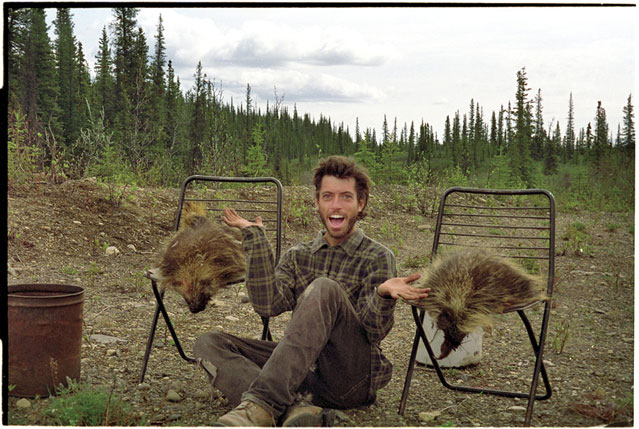
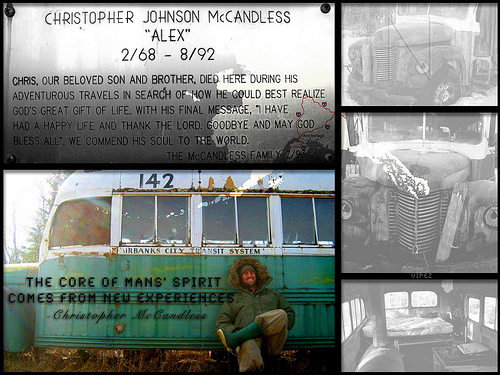
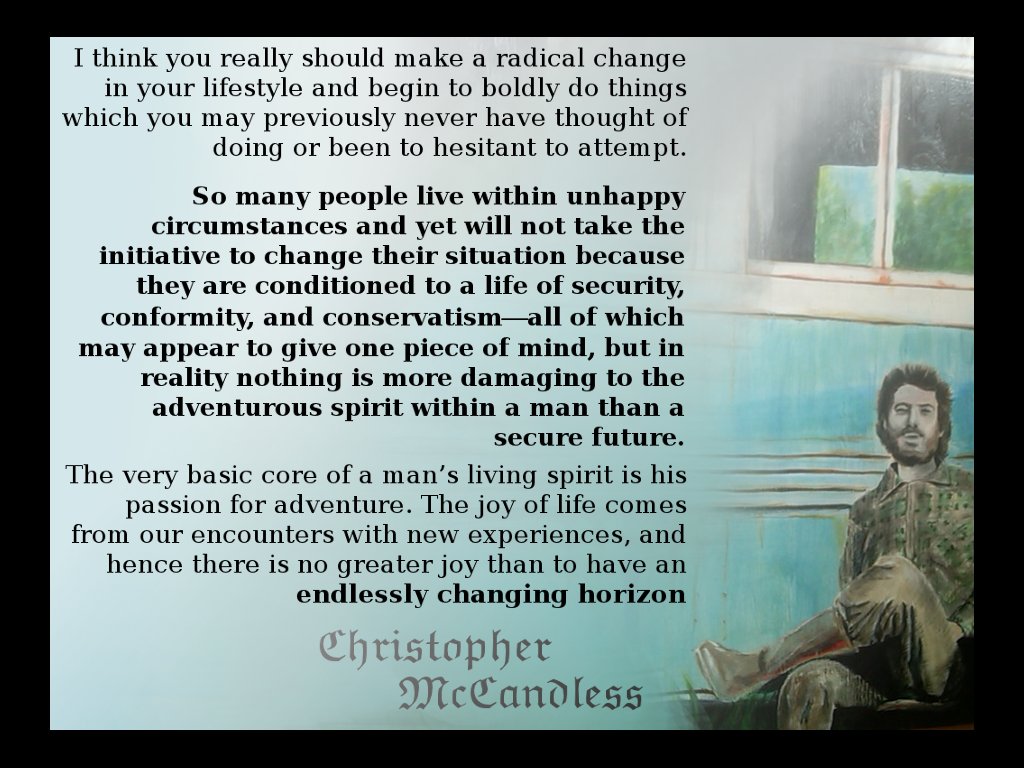
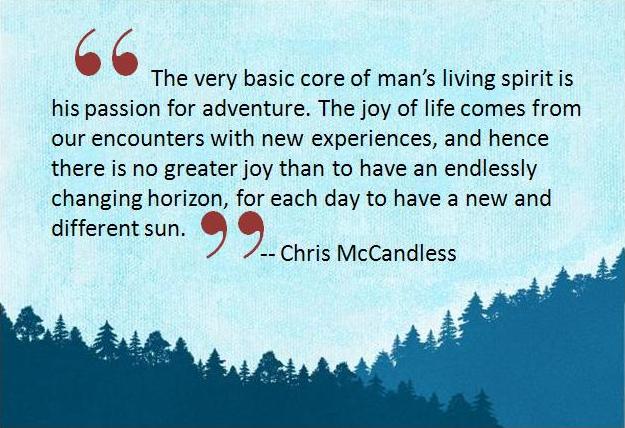
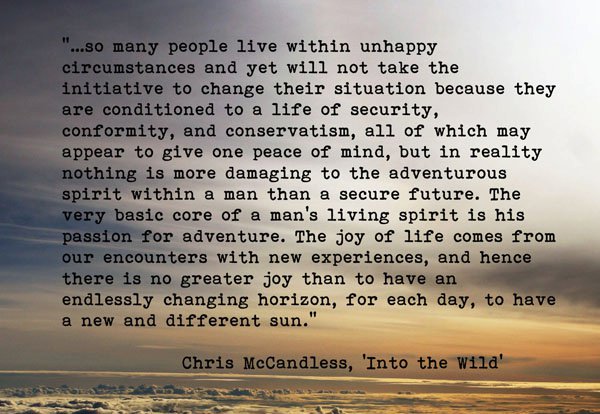



Chris McCandless werd geboren als buitenechtelijk kind van NASA-radarspecialist Walt McCandless en diens secretaresse Wilhelmina Johnson. Walt McCandless was formeel nog getrouwd met zijn eerste vrouw met wie hij zes kinderen kreeg. McCandless en Johnson kregen nog een tweede kind, een meisje Carine genoemd. Vervolgens scheidde Walt McCandless van zijn eerste vrouw en trad hij met Johnson in het huwelijk. Het paar richtte een adviesbureau op en leidde het leven van de Amerikaanse hogere middenklasse. Chris McCandless groeide op in Annandale (Virginia). Tijdens zijn middelbareschooltijd verdiende hij geld met een fotokopieerservice en het rondbrengen van pizza's. Tijdens discussies viel hij op door zijn compromisloze socialistische standpunten, hoewel hij anderzijds een aanhanger van Ronald Reagan was. Na de middelbare school wilde hij wapens naar Zuid-Afrika smokkelen om de apartheid te bestrijden.
McCandless slaagde in 1986 voor de middelbare school en studeerde in 1990 aan Emory University af in geschiedenis en culturele antropologie. Hoewel ogenschijnlijk aangepast aan het leven van zijn ouders, stond het lege materialisme van de Amerikaanse middenklasse hem tegen. De werken van Jack London, Leo Tolstoj en Henry David Thoreau hadden veel invloed op hem. Hij droomde van een Thoreau-achtig bestaan en werd na het lezen van Walden gefascineerd door Alaska. Na te zijn afgestudeerd gaf hij al zijn spaargeld (25 duizend dollar, ongeveer 18000 euro) aan Oxfam International, verbrak het contact met zijn ouders en zijn zus en begon door de Verenigde Staten te reizen onder de zelfgekozen naam "Alexander Supertramp" (Eng. "tramp" betekent "zwerver"). Hij begon zijn tocht met zijn geliefde Datsun B-210, een auto uit 1982, maar moest deze op 6 juli 1990 achterlaten toen Detrital Walsh, een rivier in Arizona, plotseling buiten zijn oevers trad. Ten slotte vond Bud Walsh, een opzichter van de National Park service, in oktober 1990 McCandless' auto aan de linkeroever van Lake Mead. McCandless bereisde Arizona, Californië en South Dakota, waar hij bij een graanelevator werkte. Perioden waarin hij een baantje had wisselde hij af met een zwerversbestaan zonder geld en met weinig contact met andere mensen. Ook zou hij volgens dagboekaantekeningen in een kano de Coloradorivier zijn afgezakt tot de Baja California.
McCandless droomde al jaren over een tocht in de wildernis van Alaska, waar hij in zijn eigen voedsel wilde kunnen voorzien. In april 1992 liftte hij via Canada naar Fairbanks en van daar naar het dorp Healy. Jim Gallien gaf hem een lift naar de Stampede Trail. Gallien was bezorgd over "Alex" die weinig uitrusting bij zich had en geen ervaring had met overleven in de wildernis van Alaska. Hij probeerde McCandless van zijn tocht te laten afzien, of tenminste met hem naar Anchorage te reizen om daar een behoorlijke uitrusting te kopen, maar McCandless wilde hier niets van weten. Hij nam alleen een paar rubberlaarzen van Gallien aan en wat voedsel, en begon aan zijn trektocht over de Stampede Trail.
Dit pad was in de jaren dertig aangelegd door de mijnbouwer Earl Pilgrim en leidde naar diens antimoonconcessie, op 60 kilometer van Healy. In 1961 werd het pad gedeeltelijk opgewaardeerd tot weg. Het bedrijf dat de werkzaamheden uitvoerde kocht drie oude International Harvester-stadsbussen uit Fairbanks en bracht die naar de Stampede Trail waar ze dienden als onderkomen voor de wegwerkers. Toen de werkzaamheden werden gestaakt, werden twee van de bussen mee teruggenomen. De derde bleef achter en werd door jagers wel als schuilhut gebruikt.
Na de Teklanikarivier te zijn overgestoken, stuitte McCandless op deze bus, op een overgroeid stuk van de Stampede Trail, ruim 30 kilometer van Healy. Hij vestigde er op 28 april zijn bivak in en leefde van rijst die hij had meegebracht, klein wild dat hij schoot en eetbare planten. Zijn dagelijks menu was onvoldoende om op gewicht te blijven, en in juli besloot hij terug te keren naar de bewoonde wereld. Hij vond zijn terugweg echter versperd door de Teklanika, die dankzij een toevloed van smeltwater veel hoger stond dan toen hij de rivier in april was overgestoken en inmiddels in een woest kolkende stroom was veranderd. Hij zag geen andere uitweg en keerde terug naar de bus. McCandless leefde in totaal zo'n 113 dagen in de bus. Omdat hij te zwak was, schreef McCandless een SOS-bericht voor iedereen die toevallig voorbij de bus zou komen. Het volledige echte bericht luidt als volgt:
Attention Possible Visitors. S.O.S. I need your help. I am injured, near death, and too weak to hike out. I am all alone, this is no joke. In the name of God, please remain to save me. I am out collecting berries close by and shall return this evening. Thank you, Chris McCandless. August?
Op 6 september zouden Ken Thompson, Gordon Samuel en Ferdie Swanson elkaar bij de bus ontmoeten om op elandenjacht te gaan. Bij de bus troffen ze een jong stel aan dat, gealarmeerd door de stank, de bus tot op enkele meters was genaderd. Gordon Samuel wierp een blik door een gebroken ruit van de bus en zag een slaapzak waar het hoofd van McCandless uit stak.
Enkele weken eerder was McCandless op 24-jarige leeftijd overleden, vermoedelijk op 18 augustus of kort daarna. Zijn stoffelijk overschot, dat nog maar 30 kilo woog, werd naar Anchorage overgebracht, alwaar het werd onderworpen aan autopsie. De lijkschouwer kwam tot de conclusie dat McCandless was overleden door voedselgebrek. Het stoffelijk overschot werd op 20 september 1992 gecremeerd en de overblijfselen werden aan de familie overgedragen.
Boeken die McCandless heeft gelezen
- The call of the wild van Jack London
- Taras Bulba van Nikolaj Gogol
- Walden van Henry David Thoreau
- Tanaina Plantlore van Priscilla Russel Kari
- Family happiness van Leo Tolstoj
- Education of a wandering man van Louis L'Amour
- War and peace van Leo Tolstoj
- White Fang van Jack London
| "Ik wilde beweging, geen rustig leven. Ik wilde opwinding en gevaar en de mogelijkheid om mij op te offeren voor mijn liefde. Ik voelde in mijzelf een overmaat aan energie, die geen uitlaat vond in ons kalme bestaan." — Onderstreepte passage in het boek van Leo Tolstoj (Family happiness) die bij McCandless' stoffelijk overschot werden gevonden.Schrijver Jon Krakauer schreef een boek[1] op basis van het dagboek van Chris McCandless, dat een periode van 113 dagen beslaat. Krakauer hing in zijn boek de hypothese aan dat het eten van giftige planten McCandless noodlottig was geworden, maar door de lijkschouwer werd hier geen enkel bewijs voor gevonden. In latere edities van zijn boek opperde Krakauer dat McCandless giftige zwammen heeft binnengekregen die zouden hebben gegroeid op de zaden die McCandless at. Ook hiervoor bestaat echter geen bewijs. In 2013 opperde Krakauer dat McCandless mogelijk leed aan lathyrisme opgelopen door het eten van enorme hoeveelheden zaden van Hedysarum alpinum. Vooral zeer actieve jonge mannen zouden daardoor snel verzwakken.[2]
Dankzij het boek is de bus een soort toeristenattractie geworden. De plaatselijke bevolking moet hier weinig van hebben en beschouwt McCandless voornamelijk als een apart figuur, want als hij met een behoorlijke kaart van het gebied op stap was gegaan, had hij kunnen zien dat hij de Teklanika zes mijl verderop had kunnen oversteken via een primitieve kabelbaan.
Ook Carine McCandless, de volle zus van Chris McCandless, schreef een boek over hem: The Wild Truth (november 2014). In het boek verklaart zij de extreme avontuurszin van haar broer als een vlucht voor hun beide ouders. Hun jeugd was ongelukkig door huiselijk geweld, vooral door de drankzuchtige en dominante vader
In 2007 kwam een film uit over het leven van McCandless. De film, gebaseerd op het boek van Krakauer, werd geregisseerd door Sean Penn, die tien jaar met het idee had rondgelopen. De hoofdrol wordt gespeeld door Emile Hirsch als McCandless.
Christopher Johnson McCandless was born February 12, 1968 in El Segundo, California. His parents are Walt McCandless and Wilhelmina Johnson (who was known as Billie) and his sister is Carine.
Walt also had children from his first marriage and they were living in California, although Walt was still legally married to his first wife when Chris and Carine were born. (This is something that Chris found out later which infuriated him to the point where he thought his life had all been a lie)    In 1976, Walt was offered a job with NASA as an antenna specialist so they moved to Virginia and his mother worked as a secretary at Hughes Aircraft. Later Walt and Billie started a consultancy firm which became very successful. But it seems working and living together affected their marriage resulting in arguements in front of Chris and Carine which cause them to distance themselves from their parents. Chris was a good student with A average grades and he was also a good runner leading a team of cross country runners. But, he was very stubborn and strong willed. He would train his cross country team mates hard taking them on practise runs in places where it was easy to get lost. But he saw it as a challenge and saw running as a form of spiritual exercise. An example of his stubbornness was receiving an F for one subject becuase he refused to write an article in the particular way that the teacher had asked. He graduated from High School in 1986 and shortly after took off on an solo adventure for the summer arriving back 2 days before he was due to start college. He arrived at college scruffy compared to his well dressed room mate. His room mate dropped out several weeks later but Chris went on to get exellent grades. He graduated from Emory University in 1990 but saw titles and honors as immaterial and irrelevant. Later he would say that university is a 20th century fad and not something to aspire to. Shortly after graduation, he gave the remaining money from his education fund to Oxfam. The cheque written by Chris on 15th May 1990, totalled $24000. He then left quietly from home to begin his adventures and assumed the name Alexander Supertramp of which he got from the book The Autobiography of a Super-Tramp by William H. Davies from 1908. When asked by someone where his family were, he would reply that he didn't have a family anymore.  He travelled through various states of America in his car (which he left after it was caught in a flash flood) and by train, hiking, canoeing and of course walking. The challenge to himself was toTRAVEL WITH  the least amount of belongings as possible and as little money as possible. He had no map and no agenda, just the will to travel. the least amount of belongings as possible and as little money as possible. He had no map and no agenda, just the will to travel.His dream was the Alaskan adventure and he would tell this to those he met along the way. Some people he worked for on odd jobs would try to convince him to stay and some would insist on giving him supplies to help with the journey. He seldom accepted. He reached his final destination on April 28, 1992 in Fairbanks Alaska. Four months later he would perish from a combination ofERRORS  and his body was found in an abandoned old Fairbanks and his body was found in an abandoned old FairbanksCity Transit Bus numbered 142 which was located on the Stampede Trail. He kept a journal along the way and took self portraits now and then. His final self portrait was a picture of him holding a farewell note in his left hand and waving with his right hand. He was but 30kg in weight and eventually died of starvation and possibly poisoning from fungus on some fruit he had eaten.  Jon Krakauer (A writer from Outside magazine) did an article on Chris in January 1993 and later wrote the book which in 2007 became the movie 'Into the Wild' by Sean Penn. Chris'es actions have caused many different debates on safety in the wild and what not to do and many have said that what he did amounted to suicide. But, he has also had a lot of praise for his courage and spirit of adventure. Bus 142 has become somewhat of a tourist attraction, with many visiting every year and posting Youtube vidoes and pictures on the internet. There is also a documentary on the Chris McCandless story. You can read more here. Christopher McCandless Journal Entries for his Alaskan Adventure - Day 2: Fall through the ice day. Day 4: Magic bus day. Day 9: Weakness. Day 10: Snowed in. Day 13: Porcupine day.... Day 14: Misery. Day 31: Move bus. Grey bird. Ash bird. Squirrel. Gourmet duck! Day 43: MOOSE! Day 48: Maggots already. Smoking appears ineffective. Don't know, looks like disaster. I now wish I had never shot the moose. One of the greatest tragedies of my life. Day 68: Beaver Dam. Disaster. Day 69: Rained in, river looks impossible. Lonely, Scared. Day 74: Terminal man. Faster. Day 78: Missed wolf. Ate potato seeds and many berries coming. Day 94: Woodpecker. Fog. Extremely weak. Fault of potato seed. Much trouble just to stand up. Starving. Great jeopardy. Day 100: Death looms as serious threat, too weak to walk out, have literally become trapped in wild—no game.Day 101-103: [No written entries, just the days listed.] Day 104: Missed bear! Day 105: Five squirrel. Caribou. Day 107: Beautiful berries. Day 108-113: [Days were marked only with slashes.]        Fairbank City Bus Location  Christopher McCandless Datsun         Christopher McCandless diary  Chris McCandless journal         Memorial left by Christopher's parents on bus 142      Christopher McCandless and his Datsun  Road Sign for Stampede Road and the Stampede Trail  The area near Stampede Road  Chris and Walt    |

Chris McCandless SOS note 142 Bus

Magic 142 bus

Christopher McCandless Wallet














Geen opmerkingen:
Een reactie posten